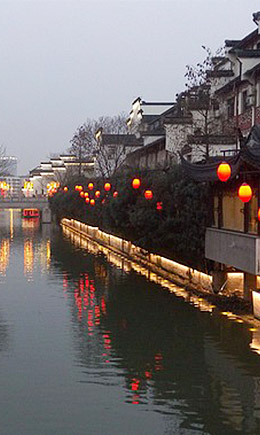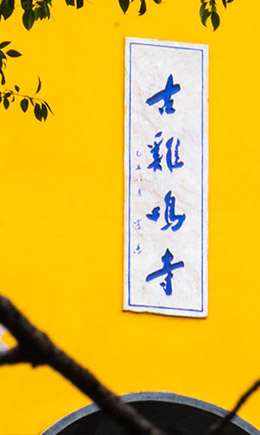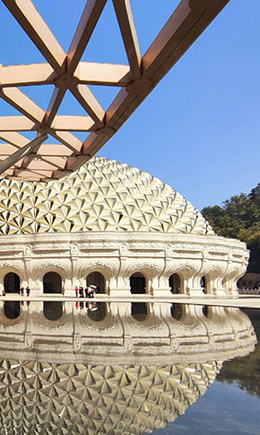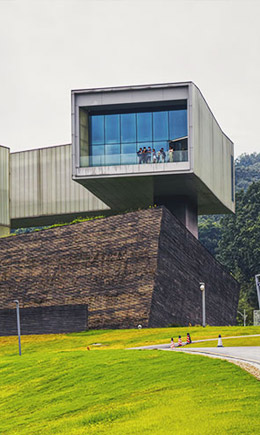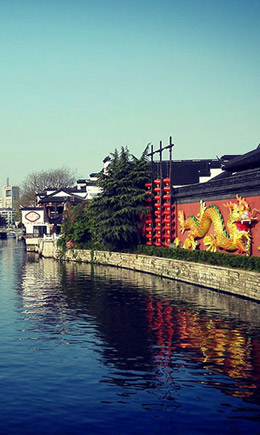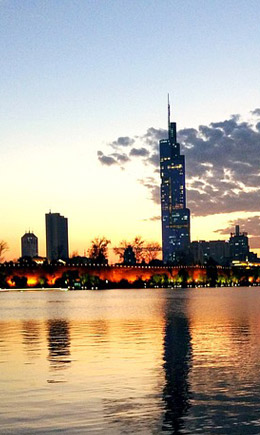Nanjing is a sub-provincial city located in the delta region of the Yangtze River in the southwestern part of the Jiangsu province in the east-central part of China. Nanjing serves as the capital city of the Jiangsu province and is one of the nation's four great ancient capitals. Nanjing also serves as an important educational, cultural, economic, industrial, political, and tourism center.
The currency in China is the Chinese yuan (also called renminbi). Each yuan is divided into 10 jiao.
When you're buying currency for China, look out for the currency code CNY. And once you're in China, you'll see the symbol ¥ used to show prices.
You'll find Chinese banknotes in denominations of 1, 2, 5, 10, 20, 40 and 100 yuan and 1, 2 and 5 jiao. The 2 yuan note and the jiao notes are seldom used.
Chinese coins come in 1 yuan and 1 and 5 jiao.
Cash or Credit Card?
Cash is still more widely used in Nanjing than credit cards. Depending on your bank, using a foreign credit card in China will usually incur a foreign currency exchange fee and a transaction fee from either your home or the local bank.
Important Note: Please consult your bank or credit card company about whether you can use your card in China and if it will incur a fee. You should also let your bank back home know that you will be using your card in China; otherwise your transactions might be flagged as unusual activity and your card may get blocked.
Getting Cash in China
You can exchange your home currency for Chinese yuan before you leave or after you arrive in China. In Nanjing, you can use your debit card to withdraw money from a 24-hour ATM.
Not every card works on every machine, so it is best to stick with major banks such as the Bank of China, ICBC, China Construction Bank, or HSBC. Be sure to check which cards are supported before you use the ATM (There are usually signs on the ATM indicating what types of card are supported).
Mobile Payment
Mobile payment in Nanjing is surprisingly advanced and widely used. The two most common platforms are Alipay and WeChat. While traveling in China, you will see QR codes for mobile payment everywhere from taxis to street food stalls, making it a very convenient way to pay.
You can link a foreign credit card (e.g. Visa, MasterCard, JCB) to your WeChat account and use it to make some online payments, and Alipay allows you to use foreign credit or debit cards to add money to its TourPass wallet which can then be used to make payments in China. Apple Pay is supported by only a limited number of international brands and is rarely used in China.
Nanjing experiences a humid subtropical climate, with very hot and humid summers and freezing winters. The hot season lasts from July to September, with July being the hottest month, having an average high temperature of 31.1°C and a low temperature of 25°C.
Nanjing serves as a vital transportation hub in Eastern China, where a 3D transport system is constituted by the different modes of transportation, including the roadways, railways, and aviation facilities.
Airport: The entire Yangtze River Delta area is mainly served by the Nanjing Lukou International Airport, which is China's 12th busiest civil airport. The airport is located to the southeast of the city, 35 kilometers (22 miles) from the city center. Getting there by the 29-kilometers (18-mile) Airport Highway takes about 45 minutes.
Train: The Nanjing South Railway Station is considered Asia's most extensive high-speed railway station, while the Nanjing East Railway Station is regarded as the 15th largest railway network marshaling station in China.
Public transportation: The city's public transportation network is highly efficient and is used greatly by all the residents of Nanjing.
Nanjing has a number of internationally respected hospitals, such as the People's Hospital of Jiangsu Province and Jiangsu Province Hospital of Chinese Medicine. During the congress, emergence medical assistance will be provided to the registered participants.
The language spoken in Nanjing is Mandarin. English is the predominant foreign language taught in schools.
Xinjiekou Commercial Circle
Shanxi Road Commercial Circle
South Taiping Road Commercial Street
Golden Eagle Shopping Center
Eight Famous Snacks of the Qinhuai River
Lotus Root Stuffed with Rice
Salted Duck
Stinky Tofu
Yangtze River
Purple Mountain
Jiming Temple
Presidential Palace
Confucius Temple
Nanjing Jiangning Imperial Silk Manufacturing Museum
Nanjing Museum(https://www.njmuseum.com/en)
Nanjing Municipal Museum
Nanjing Science and Technology Museum
